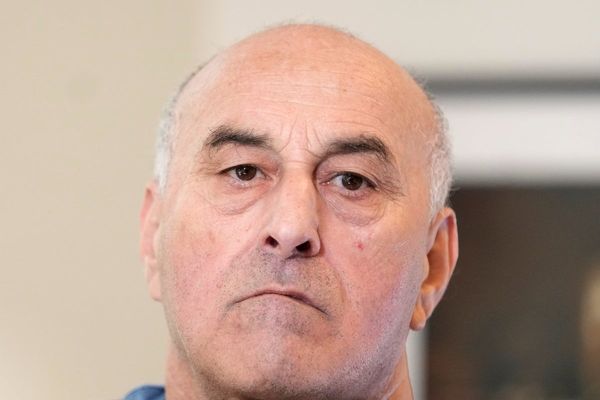
Bermondsey has always been a fluid, ever-changing kind of place, shoved up into a bend of the Thames, surrounded on all sides but also oddly isolated.
For hundreds of years that whole strip of land south of the city was an interlude of leisure and licentiousness. In his biography of London Peter Ackroyd mentions “bear pits, stew-houses and pleasure gardens”, plus a flourishing grassroots industry of cutpurses and dandy highwaymen, a place where “flashy women come out to take leave of thieves at dusk and wish them luck”.
Industrialisation brought docks and factories. A grid of streets was laid that still leads in a tangle towards the river rather than fanning out in the standard residential grid. Through all these changes people have seemed to want to give Bermondsey new names. It was called London’s Larder, then Biscuit Town, as Peek Freans, Sarson’s and Hartley’s arrived (to this day a vinegar-soaked digestive biscuit smeared with jam remains a local delicacy).
During the blitz the Luftwaffe renamed the docks “Target Area G”, pretty much putting a cap on all that light industry. But even as Bermondsey assumes its latest speculative identity as New Bermondsey, land of shiny, cash-in high-rises, those ghosts are still there, made over into Pickle Factory Mansions, Vinegar Plaza, Jammie Dodger Heights.
It is a process of assimilation that can now be applied to Millwall Football Club, another part of Bermondsey’s history that will, as of this week, get to remain in place while the neighbourhood is repackaged around it.
This is a piece of good news. At a meeting of Lewisham council on Wednesday night the club was awarded a new 999-year lease on the Den and its surrounds. It is a major staging point in Millwall’s modern history, and a good moment for the council too, led by the new mayor Brenda Dacres, who is a good egg.
It also brings down the curtain on a fraught few years during which the club was threatened at one point with relocation to Kent if it lost that slice of land. This is probably worth a recap, because it was kind of wild at the time, a story of offshore trusts, gentrification, Tony Blair, community resistance, the remaking of London and the basic notion of how our cash-sluicing mega-cities are supposed to work now.
Lewisham’s plan to compulsory purchase Millwall’s car park, all the better to pass it on to a property developer, had first surfaced in 2012. It was covered in the local press and on supporter message boards. It rumbled on vaguely. The emergent details became more interesting. The developer, Renewal, had never done anything like this before. Its ultimate ownership was hidden behind the veil in the British Virgin Islands.
One of its original directors was (hang on) the previous Labour mayor of Lewisham Dave Sullivan, who denied having any part in the scheme. Meanwhile the then Labour mayor of Lewisham, Steve Bullock, had already given half a million pounds of public money to a Renewal-based charity set up to gloss the development. This thing was like an onion. The more you peeled it, the more it stunk.
Many people were engaged in digging into those layers. Mickey Simpson of the AMS supporters’ group and Nick Hart of the Achtung! Millwall podcast led an expertly pitched social media campaign. An improbable cast began to intersect: an ex-Tory minister, the British Virgin Islands, Gary Lineker, Danny Baker, Jeremy Corbyn, a surprisingly supportive Tim Farron, the fabled “Swiss Tony”; a freelance financial expert who simply cannot be called off.
Funny stuff happened. The charitable trust was registered at a fictional Acacia Road, also the home address of banana-chomping cartoon superhero Eric Wimp, leading to Bullock being dubbed Mayor Bananaman (at least one Millwall fan would travel to the playoff final at Wembley dressed as a banana, for reasons that made a lot of sense at the time).
Lewisham town hall was besieged by flag-waving fans and rolling news cameras for a key planning meeting. We put up a pro-Millwall candidate in the general election, Willow Winston, a local artist and one of those threatened with eviction, who ended up on national television talking about communities being destroyed and retaining London’s human architecture.
And finally the scheme was halted, a minor piece of local infrastructure management that was met with celebration and national media coverage. A subsequent independent inquiry found there had been no impropriety in the council’s handling of the proposed compulsory purchase.
Why did it catch fire like this? Some will shrug at Millwall’s notoriety, a club with a reputation that reflects many urban problems of the past half-century. No club racks up quite as many demerit points, all of them eagerly reported. No club does more to engage with and address issues in its local area, led by a really good community trust. Various tectonic plates meet in places like these. Millwall can be a muster point for the tensions that arise. But if we’re interested in resolving some of them, then this is a good place to make it happen.
Certainly the connection between supporters and club is particularly visceral. This is in part because it is historical and familial, a link to the docks, the working-class communities of parents and grandparents, and to a London that is for many now unaffordable and cut off, a place of shiny closed surfaces, and a process that has continued in the meantime.
For the club the future now looks wide open. The new lease is a very good thing. The recent death of the much-loved chairman and benefactor John Berylson was a major blow. But the Berylson family have retained ownership and the club is instantly more viable with its new lease, which removes the old restrictions on developing the land around the stadium.
Can you see where this is going now, feel the creeping irony? People have often tried to build things here. In the late 1970s the then chairman unveiled plans for a “Super Den” that would have included (oh, the impossible glamour) an Asda and a bowling alley. There were protests. The Super Den, the shining Den on the Hill, never happened.
London is relentlessly hungry now. Renewal still got to build an amended development. And someone is now going to develop that land around Millwall. It will, it turns out, be Millwall. There are mocked up images of vast looming edifices. A 10-hectare strip is earmarked for a 45-floor mega-tower. The thing that will finally modernise Millwall is Millwall.
Other things are also moving. Two days after the new lease was unveiled with a glowing statement from the longstanding CEO Steve Kavanagh it was announced that longstanding CEO Steve Kavanagh would be leaving, along with various other figures in the hierarchy. These things will progress under new leadership. Who knows exactly what the future will hold?
I realised a while back my own interest in scrutinising every redevelopment scheme was in part nostalgic. Bermondsey remains one of central London’s few non-homogenised spaces. The old unmapped energy is still there, just about. The journey in the past few decades has been toward flushing out all of this urban wilderness, to becoming a single mass of monetised land.
It will happen now in the chopped-up remains of Biscuit Town, but with Millwall still at its heart. And this is as close to a victory as anyone was ever going to get.







